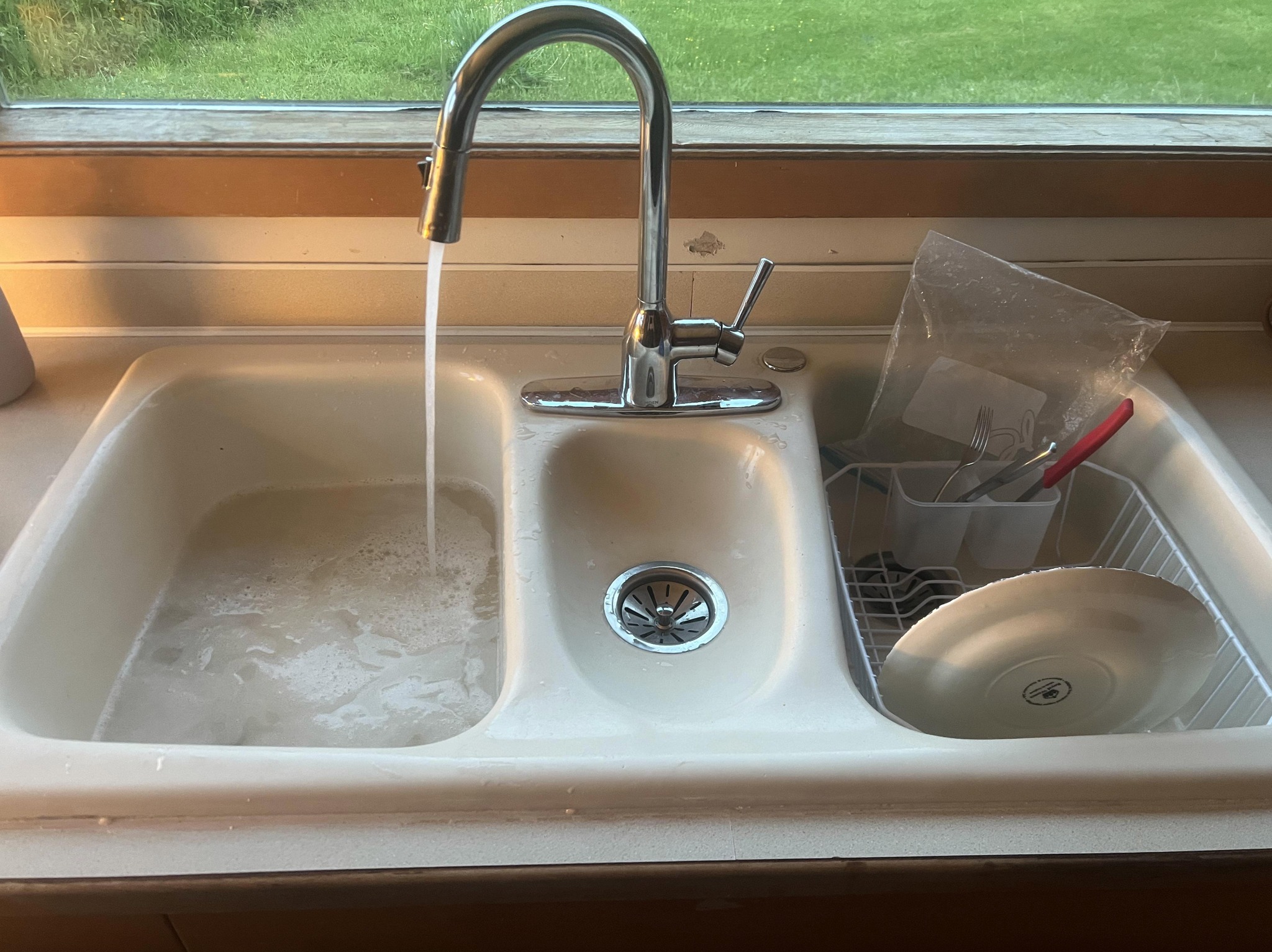If you’ve ever walked into an older home and spotted a kitchen sink with a strange little basin in the middle, you might have paused and wondered, “What in the world is that for?” It’s not something you see in today’s sleek, modern kitchens, but back in the late 1970s and early ’80s, that quirky middle sink had a genius purpose.

These vintage kitchen sinks, often made from heavy-duty enameled cast iron, were more than just a design statement—they were the product of smart engineering and thoughtful functionality. Brands like Kohler led the charge with models such as the Trieste, which featured a three-part layout: a full-size basin for soaking or washing, a drying area or drainboard, and the small yet mighty mini sink right in the center. That middle section wasn’t just there to look cool. It had a very specific role in the daily kitchen routine. At the time, dishwashers were still gaining popularity, and many families were hand-washing their dishes. The middle basin became the go-to spot for messy tasks like rinsing off food scraps, dumping out coffee grounds, or collecting grease.
It was often the place where homeowners installed their garbage disposals. By keeping food waste confined to this central spot, the larger basins stayed cleaner, and the whole dishwashing process flowed more smoothly. This setup offered a surprising level of efficiency—long before modern buzzwords like “kitchen workflow” became trendy. In an age when kitchens were practical hubs of family life and meals were still cooked from scratch, having designated zones made the chaos of cleaning feel more manageable. You’d scrub in one basin, rinse in another, and scrape leftovers into the middle sink. It was hygienic, organized, and satisfying in its own old-school way. However, as dishwashers took over and kitchen aesthetics began to shift toward minimalism and sleek countertops, the three-part sink started to fall out of favor. By the 1990s, it was rare to see them in new builds.
Cast iron sinks were heavy and expensive, and the middle basin was seen as redundant by many homeowners. Designers began to favor under-mount sinks, single-basin options, and stainless-steel setups that matched the streamlined, modern look people wanted. But in the race toward efficiency and simplicity, we may have sacrificed a bit of charm—and some clever functionality, too. That middle sink wasn’t just an oddball; it was part of a thoughtful design philosophy that treated the kitchen like a workspace deserving of smart tools. And now, like many retro design elements, it’s making a quiet comeback.
Home renovators with an eye for vintage style are starting to recognize the value in these old setups. Some are restoring original sinks, while others are installing new multi-basin configurations inspired by the past. There’s something undeniably appealing about honoring the practical traditions of older kitchens while blending them with modern needs. After all, why shouldn’t we have a designated space for the messiest parts of kitchen cleanup? Why did we abandon built-in features that once made everyday chores feel smoother and more satisfying? That mini sink in the middle may seem like a relic of a bygone era, but it represents a time when kitchen design was grounded in daily routines, not just visual trends. So, if you find yourself in a home with one of these vintage kitchen sinks, don’t be too quick to tear it out. Look closer, and you might see the ingenuity that went into it—a relic from a time when function was just as important as form. These retro sinks were not only built to last, but they were built with purpose. And in today’s world of cookie-cutter layouts and trendy upgrades, that kind of thoughtful utility deserves a second look. Because sometimes, the smartest solutions are the ones we’ve already used—and simply forgotten.





